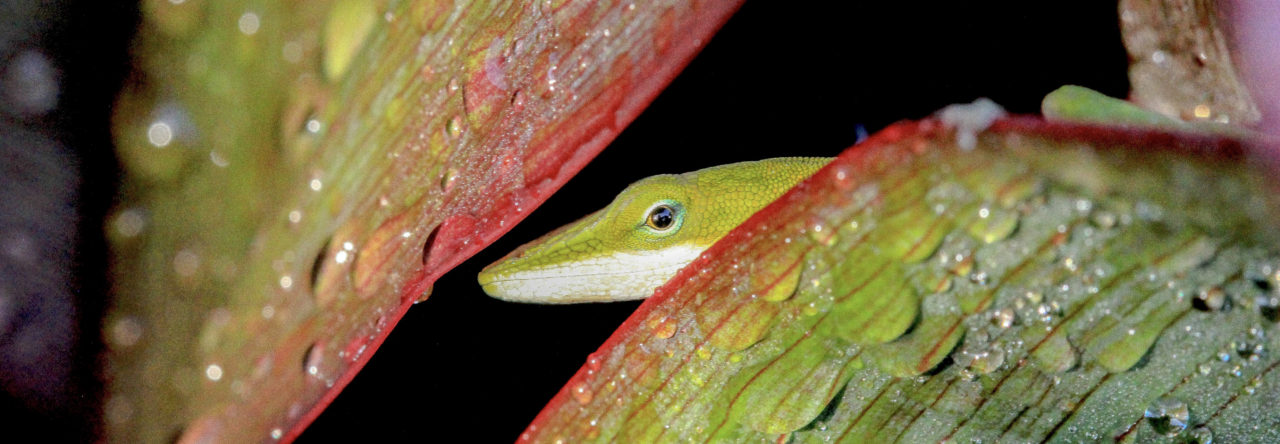In their rate of heating and cooling. A recent paper by Walguarnery et al. reveals that baby green and brown anoles change temperatures at a remarkably rapid rate, much higher than that reported for most other vertebrates and comparable to that of insects. The reason would seem to be obvious: they are small, with a large surface-to-volume ratio, and thus they gain and lose heat rapidly. Moreover, the typical lizard posture, with body resting on the substrate, enhances the rate of conductive transfer of heat.
The authors point out that this finding has interesting implications for our understanding of habitat partitioning between species. In particular, if the body temperature of juvenile anoles very rapidly equilibrates with the operative environmental temperature of the exact spot they occupy, then individuals can very precisely regulate their body temperature, whereas the slower change of larger lizards makes it more difficult to finely adjust body temperatures by moving from one spot to another.
As part of the study, the authors also measured the preferred body temperature of lizards in laboratory gradients and found that juvenile green anoles preferred to be 2 degrees warmer than brown anoles. This result is particularly interesting because previous work on adult lizards had found that brown anoles prefer warmer temperatures. Assuming that this is a real effect and not an artifact of differences between the methodologies of the two studies, this finding raises interesting questions: why do temperature preferences change ontogenetically, and what implications do these changing preferences have for patterns of habitat partitioning? From my own personal experience, adult brown anoles usually appear to occur more frequently in hot and exposed positions than green anoles, and it hasn’t been obvious to me that the habitat use of juveniles of the species is any different, but I have to admit I haven’t paid that much attention to the little fellas. Like anole biology more generally, the thermal ecology of juvenile anoles is a little explored and potentially important area for future research.
But enough of my blathering. Let’s hear what the author, Justin Walguarnery, has to say about the paper:
“The study was conducted as part of a series of investigations into how two of the most widespread Anolis species interact early in life. In particular, we were interested in identifying patterns of behavior and physiological ecology present immediately after hatching. Our goal here was to observe species characteristics defining the fundamental niche that might be constrained, modified, or obscured later in life.













 Although Anole Annals is devoted to all things anoline, we try not to be too parochial. In particular, when fascinating items appear in print or cyberspace on other lizards, we try to report them here, especially if they have some relevance to matters anole.
Although Anole Annals is devoted to all things anoline, we try not to be too parochial. In particular, when fascinating items appear in print or cyberspace on other lizards, we try to report them here, especially if they have some relevance to matters anole.



